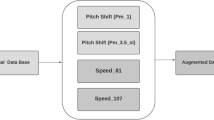Abstract
Speech emotion recognition is a mechanism to perform interaction between human and machine. Speech is a most attractive and effective way for expressing emotion as well as attitude. This paper focuses on identifying impact of gender on different basic emotions during exchange of speech. To analyze above different emotional features, emotion speech Hindi database simulated by Indian Institute of Technology Kharagpur, Mel-frequency cepstral coefficient feature extraction method and a classification method are processed. The analysis shows the machine recognizes the female speech more efficiently than male emotion speech recognition irrespective of the method. Simulation also carried out for text independent data. The simulation is carried out by using Indian Institute of Technology Speech emotion for Hindi database. Simulation clearly shows the recognition always happens good when it is performed by female speech than male. And also it doesn’t matter, whether it is text dependent or text independent.
Access this chapter
Tax calculation will be finalised at checkout
Purchases are for personal use only
Similar content being viewed by others
References
Koolagudi, S., Rao, K.S.: Emotion recognition from speech using source, system, and prosodic features. In: International Journal of Speech Technology, vol. 15, pp. 265–289 (2012)
Nayak, B., Pradhan, M.K: Text-dependent versus text-independent speech emotion recognition/advances in intelligent systems and computing. In: 2nd International Conference on Computer and Communication Technologies, vol. 379, pp. 153–161 (2015). https://doi.org/10.1007/978-81-322-2517-1_16
Ververidis, D., Kotropoulos, C.: Emotional speech recognition: resources, features, and methods. SPC 48, 1162–1181 (2006)
Rabiner, L.R., Juang, B.H.: Fundamentals of Speech Recognition. Prentice-Hall, Englewood Cliffs, New Jersy (1993)
Nayak, B., Madhusmita, M., Sahu, D.K.: Speech emotion recognition using different centered GMM. Int. J. Adv. Res. Comput. Sci. Softw. Eng. 3(9), 646–649 (2013)
Koolagudi, S.G., Maity S., Kumar V.A., Chakrabarti, S., Rao, K.S.: IITKGP-SESC: speech database for emotion analysis, vol. 40, pp. 485–492. Springer, Berlin, Heidelberg, (2009)
Koolagudi, S., Reddy, R., Yadav, J., Rao, K.S.: IITKGP-SEHSC: Hindi speech corpus for emotion analysis. In: In International Conference on Devices and Communications (ICDeCom), pp. 1–5 (2011)
Moataz, M.H., El Ayadi, M., Kamel, M.S., Karray, F.: Survey of speech emotion recognition: feature, classification, schemes and databases. Pattern Recognit. Elsevier 44(3), 572–587 (2011)
Cheng, X., Duan, Q.: Speech emotion recognition using Gaussian Mixture Model. In: The 2nd International Conference on Computer Application and System Modeling (2012)
Thapliyal, N., Amoli, G.: Speech based emotion recognition with Gaussian Mixture Model. Int. J. Adv. Res. Comput. Eng. Technol. (2012)
Reynolds, D.: Gaussian Mixture Models: MIT Lincoln Laboratory, 244 St Wood, emotion recognition using support vector regression, In: 10th International Society for Music Information Retrieval Conference (ISMIR 2009) (2009)
Wankhade, S.B., Tijare, P., Chavhan, Y.: Speech emotion recognition system using SVM AND LIBSVM. Int. J. Comput. Sci. Appl. 4(2) (2011). ISSN: 0974-1003
Khanna, M.P., Kumar, S., Toscano-Medina, K., Nakano, M., Meana H.P.: Application of Vector quantization in emotion recognition from human speech. In: Information Intelligence, Systems, Technology and Management Communications in Computer and Information Science, vol. 141, pp. 118–125 (2011)
Olivares-Mercado, J., Aguilar, G., Toscano-Medina, K., Nakano, M., Meana, H.P.: GMM vs. SVM for face recognition and face verification. In: Corcoran, P. (ed.) Reviews, Refinements and New Ideas in Face Recognition (2011). ISBN: 978-953-307-368-2
Author information
Authors and Affiliations
Corresponding author
Editor information
Editors and Affiliations
Rights and permissions
Copyright information
© 2022 The Author(s), under exclusive license to Springer Nature Singapore Pte Ltd.
About this paper
Cite this paper
Nayak, B., Bisoyi, B., Pattnaik, P.K., Das, B. (2022). Gender-Based Emotion Recognition: A Machine Learning Technique. In: Satapathy, S.C., Peer, P., Tang, J., Bhateja, V., Ghosh, A. (eds) Intelligent Data Engineering and Analytics. Smart Innovation, Systems and Technologies, vol 266. Springer, Singapore. https://doi.org/10.1007/978-981-16-6624-7_26
Download citation
DOI: https://doi.org/10.1007/978-981-16-6624-7_26
Published:
Publisher Name: Springer, Singapore
Print ISBN: 978-981-16-6623-0
Online ISBN: 978-981-16-6624-7
eBook Packages: Intelligent Technologies and RoboticsIntelligent Technologies and Robotics (R0)




